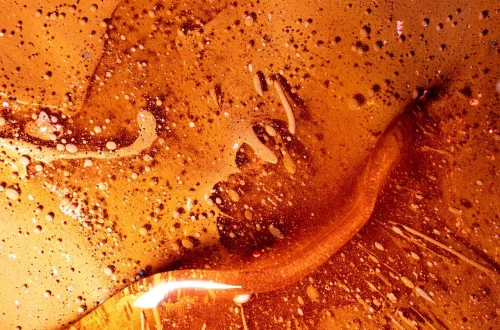
Infected Tooth Extraction Images: Understanding the Healing Process
Infections can occur in various parts of the body, and when it comes to dental health, an infected tooth can lead to significant discomfort and complications. The dental structure is a complex system of tissues, nerves, and blood vessels, which means that infections can quickly escalate if not addressed promptly. This situation often necessitates tooth extraction, a common dental procedure aimed at removing the problematic tooth to prevent further health issues.
The extraction process itself can seem daunting, but understanding the healing journey that follows is crucial for both physical recovery and mental assurance. Post-extraction, the body initiates a natural healing process, which can vary in duration and intensity based on several factors, including the individual’s overall health, the complexity of the extraction, and adherence to aftercare protocols.
Visual aids, such as infected tooth extraction images, can serve as an educational tool, helping patients visualize what to expect during recovery. By familiarizing oneself with the healing stages, individuals can better manage their expectations and take proactive steps toward a smooth recovery. Understanding this process not only alleviates anxiety but also encourages patients to maintain proper oral hygiene and follow their dentist’s recommendations.
Signs and Symptoms of an Infected Tooth
Before diving into the healing process, it’s essential to recognize the signs and symptoms of an infected tooth. Early detection can make a significant difference in treatment outcomes and can help prevent complications that might lead to tooth extraction.
The initial symptoms often include severe toothache, which may radiate to the jaw, neck, or ear. This pain is typically persistent and can worsen when lying down or applying pressure to the affected area. Alongside the pain, swelling around the gum line is frequently observed, indicating inflammation and infection. Patients may also notice redness and tenderness in the gums, which can extend beyond the immediate area of the tooth.
Other common symptoms include fever, a foul taste in the mouth, and difficulty swallowing or opening the mouth. These signs indicate that the infection may be spreading, necessitating prompt dental intervention. In some cases, patients may experience swollen lymph nodes in the neck, which can be a sign of a more severe infection.
It’s vital to seek dental care immediately upon noticing these symptoms. An infected tooth can lead to serious complications, such as abscess formation, which may require surgical intervention. Dentists often recommend diagnostic imaging, like X-rays, to assess the extent of the infection and determine the best course of action, which could include extraction if the tooth is deemed irreparable.
Awareness of these symptoms not only prepares patients for potential dental visits but also emphasizes the importance of maintaining regular dental check-ups. Preventive care can help catch issues before they escalate into painful infections requiring extraction.
The Tooth Extraction Procedure
Tooth extraction is a common dental procedure, but understanding what it entails can help alleviate fears and prepare patients for the experience. The extraction procedure typically begins with a thorough examination and assessment by the dentist. This may include taking X-rays to evaluate the tooth’s position and the surrounding bone structure.
Once the decision to extract is made, the dentist will administer a local anesthetic to numb the area around the tooth, ensuring that the patient experiences minimal discomfort during the procedure. In some cases, sedation may be used to help patients feel more relaxed, especially if they are anxious about the extraction.
The actual extraction process involves loosening the tooth from its socket using specialized tools. The dentist may need to remove bone surrounding the tooth or cut the tooth into smaller pieces for easier extraction, particularly if the tooth is impacted or has extensive decay. The entire procedure usually takes no longer than an hour, though this can vary depending on the tooth’s complexity.
After the extraction, the dentist will provide detailed instructions for post-operative care. This often includes advice on managing pain, controlling bleeding, and maintaining oral hygiene during the healing process. Understanding these guidelines is crucial for a successful recovery, as they help minimize the risk of complications, such as dry socket or infection.
Patients should also be aware that some swelling and discomfort are normal following the procedure. Ice packs can be beneficial for reducing swelling, while over-the-counter pain relievers may help manage discomfort. Following the dentist’s aftercare instructions will contribute significantly to a smoother healing journey.
Understanding the Healing Process
The healing process after a tooth extraction involves several stages, each of which plays a vital role in restoring health to the affected area. Immediately following the extraction, a blood clot forms in the socket, which is essential for healing. This clot protects the underlying bone and nerves, preventing infection and allowing new tissue to develop.
Within the first few days, patients may experience swelling and discomfort as the body responds to the surgical trauma. Pain levels typically peak around 48 to 72 hours post-extraction but should gradually decrease as healing progresses. During this time, it’s crucial to avoid disturbing the blood clot, which can lead to dry socket—a painful condition where the underlying bone is exposed.
As the days pass, the body continues to repair itself. New tissue begins to form, and any residual swelling should start to subside. By the end of the first week, most patients will notice significant improvements, with pain and swelling diminishing substantially. However, complete healing of the gum tissue can take several weeks, and the underlying bone may continue to remodel for months.
Staying vigilant about oral hygiene during this period is essential. Gentle rinsing with warm salt water can aid healing and reduce the risk of infection. Patients should also avoid smoking, drinking through straws, and consuming hard or crunchy foods that could disrupt the healing site.
Monitoring the extraction site for signs of infection—such as increased pain, swelling, or discharge—is crucial. If any concerning symptoms arise, contacting a dentist promptly can help address potential complications early.
Tips for a Smooth Recovery
Recovering from a tooth extraction doesn’t have to be a daunting process. By following a few essential tips, patients can help ensure a smoother recovery and minimize discomfort and risks associated with complications.
First and foremost, adhering to the dentist’s aftercare instructions is non-negotiable. This includes taking prescribed medications as directed and attending any follow-up appointments to monitor the healing process. Staying on top of these recommendations can significantly impact recovery speed and overall health.
Hydration is also key. Drinking plenty of fluids, especially water, helps keep the body hydrated and supports the healing process. However, it’s best to avoid carbonated beverages or alcohol, as these can irritate the extraction site and hinder recovery.
Diet plays an important role in healing, too. Patients should opt for soft foods that are easy to chew and swallow, such as yogurt, mashed potatoes, and smoothies, for the first few days post-extraction. Gradually reintroducing solid foods as healing progresses can help avoid unnecessary strain on the extraction site.
Rest is another critical component of recovery. Allowing the body to recuperate by getting sufficient sleep and avoiding strenuous activities can promote faster healing. Additionally, using ice packs on the cheeks for the first 24 hours can help reduce swelling and ease discomfort.
Finally, practicing good oral hygiene is essential, but care should be taken around the extraction site. Gently brushing teeth and avoiding the area directly around the extraction for a few days will help maintain cleanliness without disturbing the healing process.
In conclusion, while tooth extraction can be a necessary step in managing dental infections, understanding the healing process and following best practices can facilitate a smooth recovery.
**Disclaimer**: This article is for informational purposes only and should not be considered medical advice. For health concerns or questions about dental procedures, please consult a qualified healthcare professional.




